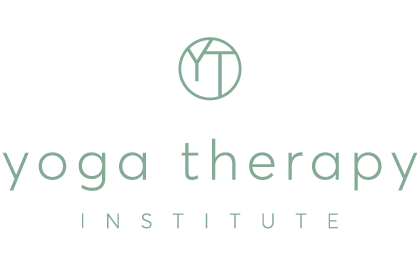by Yoga Therapy Institute
This article discusses the effects of yoga practices for people with PTSD and trauma.
Trauma, post-traumatic stress disorder and the role of Yoga are hot topics in the Yoga community.
Experts such as Dr Bessel Van der Kolk and Dr. Shirley Telles agree that Yoga therapy has a useful place in trauma treatment.
Shirley Telles, MBBS, Ph.D. (Neurophysiology) is the Head of the Indian Council of Medical Research Centre for Advanced Research in Yoga and Neurophysiology.
People with PTSD can have severe anxiety, sleep disorders with recurring nightmares, and in certain cases, depression.
Shirley’s own research has shown that for PTSD and trauma Yoga helps –
- to prevent the disturbing images and memories from getting into long-term memory (this a speculation based on early, unpublished results of an ongoing imaging study that she is currently undertaking)
- to reduce anxiety and panic attacks
- improve the quality and quantity of sleep, reduce arousals and nightmares
- reduce anhedonia (lack of a sense of pleasure) and hence the possibility of depression.
This research conducted by Shirley and her colleagues has been published in journals including, Biomed Central Psychiatry and Depression Research and Treatment. The research was based on Yoga camps held for survivors of the Boxing Day tsunami of 2004, as well as victims of repeated floods in Eastern India in 2010.
Shirley writes that, “We began our program with deep, diaphragmatic breathing accompanied by chanting. Most of the survivors were too distressed to keep their eyes closed and meditate. We synchronized inhalation/exhalation with body movements; prolonging exhalation which increases the vagal tone (rest and digest) as opposed to the sympathetic (fight or flight). After this we did an awareness, guided meditation which helped elicit people’s emotions.”
Pranayama Techniques for PTSD and Trauma
Shirley is very specific about which pranayama techniques are useful for people who have anxiety and sleep disturbances, based on her research and clinical observations. She suggests –
- Alternate nostril breathing (anulom-vilom)
- Bumble bee breathing (bhramari)
- Chanting of Om or any other calming syllable or phrase
In the case of depression, Shirley suggests the following practices –
- Breath of Fire (Kapalabhati – beginning with 45 breaths/minute and frequent rests. This is contra-indicated where the person has high blood pressure, any cardiac condition, any injury, epilepsy etc.
- Bellows breathing (bhastrika)
- A few rounds of Salute to the Sun with each movement synchronized with the breath
References
Telles, S., Singh, N., and Balkrishna, A. (2012). Managing mental health disorders resulting from trauma through yoga: a review. Depression Research and Treatment, 2012:401513
Büssing, A., Michalsen,A., Khalsa, S. B., Telles, S., and Sherman, K. J. (2012). Effects of yoga on mental and physical health: A short summary of reviews. Evidence-Based Complementary and Alternative Medicine, 2012:165410.
Telles, S., Singh, N., Joshi, M, and Balkrishna, A. (2010). Post traumatic stress symptoms and heart rate variability in Bihar flood survivors following yoga: a randomized controlled study. Biomed Central Psychiatry, 10:18.

